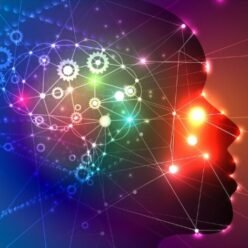Adolescence is the phase of life between childhood and adulthood, ages 12-18. During adolescent years, there are many changes that are taking place, including psychological, cognitive, introspective ability, the establishment of moral values and norms, and coming to terms with those developmental tasks that are specific to this period of life. Also, adolescence marks the beginning development of more complex thinking processes, and also includes the ability to consider many points of view and compare or debate ideas or opinions. The adolescent period is tough enough without a brain injury. So, you can imagine what happens if we add a brain injury to the mix. Young patients with brain injuries have unique needs compared to adults with brain injuries, and the right dose of help, mentoring, and support will improve the trajectory of healing and recovery.
In 1977, I had a serious accident. I was 17, the late stage of my adolescent years. First, there were 2 months of hospitalization, with treatments and rehabilitation to follow. Then, there were the brain injury symptoms starting with double vision for months, then dizziness and fogginess, etc. The term brain injury was unknown to me and my family after my accident, and so all I could do was power through while concealing what I felt. These were confusing times, and watching my parents struggle while trying to offer their best made matters worse. We did not see eye-to-eye, and no one understood what was going on. This led me to shut out my loving family, and move away for a while. It was a miracle that I made it through, given the lack of clarity during those turbulent times, which led to plenty of bad decisions.
Years later, my daughter Sarah had her initial brain injury after a hemorrhagic stroke at the age of 12. In the following years, Sarah had multiple gamma-knife surgeries, and each contributed to additional brain injuries and different symptoms. Early on after Sarah’s brain injury, I had a serious rude awakening, and I stepped up my game as a father so I could help every step of the way. Living in my head through my bad experience with a brain injury could not be repeated with my child. First, we had to come out and meet the challenge together as a family, starting with the needed medical diagnostics and treatments, then her neuropsych assessment and what it meant, home schooling after her brain bleed, and working through the debilitating symptoms she was experiencing. All my years of experience and the wisdom I did not know I had came rushing in.
As a result, Sarah was not alone and fared much better despite her many, many challenges. She had a full-time support team, helping her every step of the way. Things were not easy, with the treatment regimen, the devastating symptoms, the academic challenges, and the social issues. Adding the hormonal changes and the rebellious nature of adolescent years, there was a lot to deal with. The worst part, from her point of view, was the awful treatment by some friends and family who lacked understanding, and their mockery and criticism added a blow to her social life. But she was not alone, and there were many fantastic people who stayed the course, and others who stepped into the picture to help, for which we were thankful. All the amazing people in Sarah’s life, along with my own experience with a brain injury, have created a resilience in her character, and certainly helped improve her trajectory.
Everyone knows the more caring people involved in children’s and adolescents’ life, the better their chances for success. This is further magnified when you add brain injury to the mix, and the term “it takes a village” takes on a whole new meaning. For your adolescent with a brain injury, you can help increase awareness by providing a survivor wallet card, in order to help avoid misunderstandings with law enforcement, first responders and others. The wallet card should include contact information, an emergency contact, and possible symptoms of brain injury.
